DEEP SPACE GUEST: COMET LAB
By Bruce Mellin, Brooks School, N. Andover, MA
In this activity, your students will have the opportunity to figure
out the diameter of the coma, speed, direction of travel,
mass, energy, through a series of existing MicroObservatory
images of Comet Hyakutake.
ACCESS THE IMAGE FILES AT THE BOTTOM OF THIS PAGE.
This activity is designed for use with NIH Image, but can be
adapted for use with image rocessing programs for the PC.
If you choose to do this activity, you must access the folder (SEE THE BOTTOM
OF THIS PAGE) containing the comet images, and save those images so
that you may work with them in your image processing program.
Deep Space Guest
Comets are rarely bright enough to be seen with the naked eye.
Amateur and professional astronomers scan the sky with telescopes
and cameras to collect data on these icy visitors from the depths of
our solar system. In this activity, your students will have the opportunity
to determine items such as the diameter of the coma, speed, direction of
travel, mass, energy.
Assumptions and measurements from other sources include the following;
Distance to comet from Earth Å 0.1 AU
Distance from comet to Sun Å 1.0 AU
Diameter of comet (hidden by coma-determined by radar)Å 2 km
Density of comet 1000 kg/m3
Names of nearby stars are provided on the Hyakutake image
The file 'Comet Data and Credits' contains position information
A scaled distance of 465 arcminutes between Nekkar and
Seginus has been built into the Hyakutake image.
The period of this comet is given as Å 10,000 years
File/Open/Hyakutake
Answer the following questions based on the open image.
1. Comet Hyakutake is shown in the image.
What characteristic (s) distinguishes the come from stars?
2. What evidence do you see for a 'tail?'
3. What is the direction to the Sun? What is your evidence?
4. What is the direction of the comet's motion? What is your evidence?
5. Print a copy of the Hyatukake image for future reference.
Close all open images or files before proceeding.
Open all of the images in the folder 'Comet.'
Stack using the Stacks/Windows to Stack.
Animate the stack using Stacks/Animate. You may
wish to adjust the speed using the numeric keys.
Answer the following questions based on the animated stack.
1. What new characteristic(s) distinguishes the comet from stars?
2. What new evidence do you see for a 'tail?'
3. Compare the direction in which the comet is moving with the
direction of its' tail.
Suggest an explanation for the difference.
4. What could cause the brightness variations between images
during the animation?
5. Apply various false colors to the stack using the Options/Color tables Menu.
Why might one color table be preferred over another?
Which do you like best?
6. What additional information does the false coloring provide
about the coma and tail?
7. Does the false coloring have any effect on the stars in the image?
Calculating the Speed of the Comet.
Choose the Straight Line Selection Tool from the Tools window.
Use the straight line tool to draw a line between Nekkar and Seginus.
(These stars are located in the constellation Bootes)
Choose Set Scale from the Analyze menu.
Set units to arbitrary, Known distance to 465, and pixels per UNIT
to pixels per ARCMINUTE.
The acrminute scale was based on the Right Ascension and Declinations
of these two stars.
Arcminutes were used to provide accuracy and to keep the focus
of the activity on determining the distance covered by the comet
rather than time spent teaching celestial coordinate systems.
To calculate the distance the comet moves during the 15 intervals,
using the measuring tool, find the length in arcminutes. Using the
distance the comet is away from the earth and the
tangent, calculate the distance the comet has moved during the
interval of time from frame one to frame sixteen.
Divide distance by time to get speed.
From the given period and Kepler's third law calculate the average radius of orbit.
Perihelion is less than 1 AU and the average radius is very large,
so aphelion should be about twice the average radius.
This distance is a good approximation to ° . If you were to release
an object from rest at infinity and let it free fall toward the sun,
by the time it reached the Earth's orbit it would have a very high
velocity as gravitational energy was converted to kinetic energy.
This is essentially what has happened to the comet. Because the kinetic
energy at aphelion is very small compared the kinetic energy at 1 AU,
you may consider this as a good approximation for free fall.
Recall that the equation is
Eg = Ek
so �f(GMm,R) = �f(1,2) m v2 where R is the position at
the time we measured (about 1 AU). From this solve for v.
Realize that these are approximations that should give answers
that are within the number of significant digits we
have. Compare the speed calculated here with the speed found
from the images.
The diameter of the solid nucleus has been measured with radar to
be about 2000 m. If the comet nucleus is assumed to be a dirty
snowball of ice the density would be about 1000 km/m3. from
density = �f(m,v) = �f(m,�f(4,3) ¹ r3 ) the mass can be calculated.
With the mass and speed of the comet the kinetic energy can be found.
Comet data and Credits
Comet Hyakutake March 23, 1996 11:40 PM to March 24, 1996 1:09 AM
MicroObservatory Telescope Project (NSF funded)
Harvard College Observatory Cambridge Massachusetts
Photo credits :Steve Leiker-MicroObs Project at HCO sleiker@cfa.harvard.edu
Processing and scaling :Bruce A. Mellin bmellin@Brooks.mec.edu
RA Hours Minutes Decl Degrees Minutes
Nekkar 15 01.9 40 23
Seginus 14 32,1 38 18
40 Bootes 14 59.6 39 16
33 Bootes 14 38.8 44 24
Distance to comet = approximately 0.1 AU ???
Distance from Nekkar to Seginus = 465.24 arcminutes (7.75 degrees) This was used
on the Scale & Labels image included with these files.(RA and Dec for labeled
stars included above) How fast is the comet traveling?
Each image is an 8 bit greyscale - 300 second exposure.
Time and date for each image included in file name.
Each image has been processed with a median rank filter .
Make a greyscale movie of the comet.
Travel direction for the comet and how its tail "tags along"
are of interest! Change the LUT to Sprectrum and watch for solar
wind/ablation effects not visible in greyscale.
Hyakutake Scale and Labels 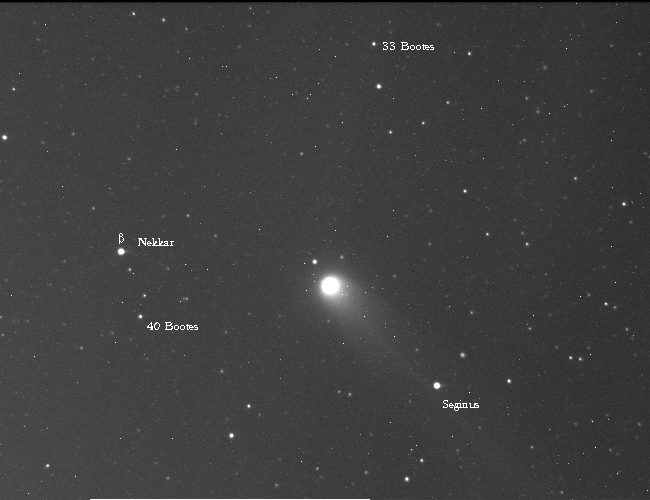
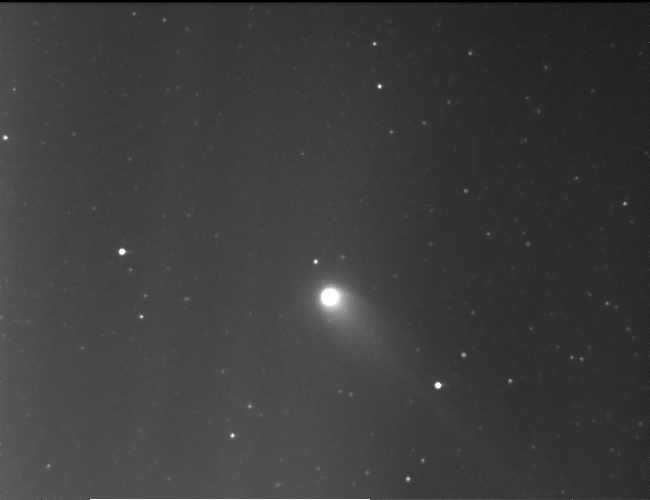
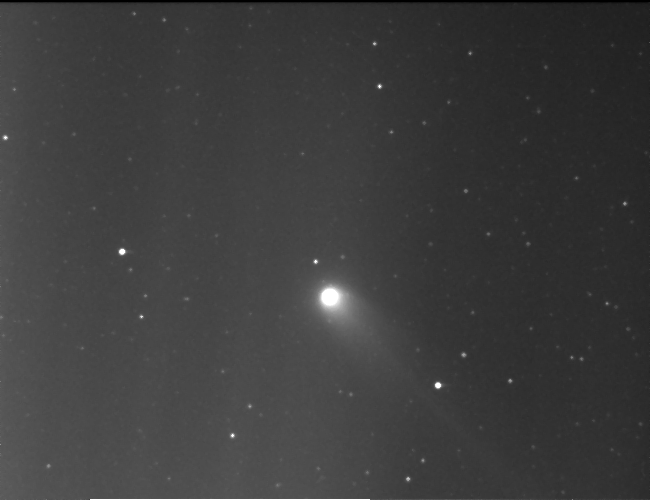

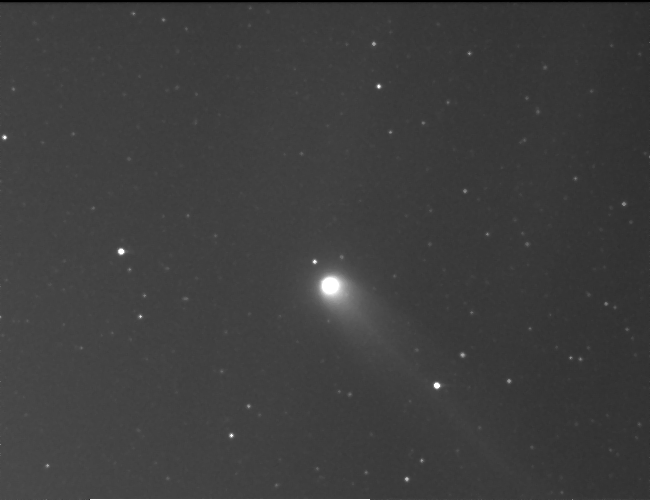



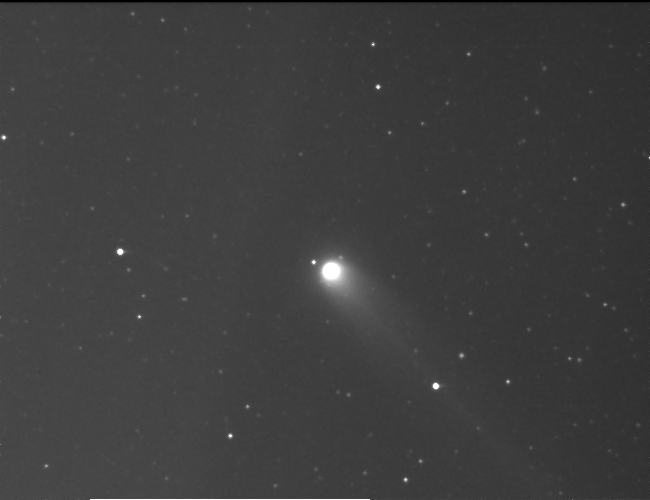
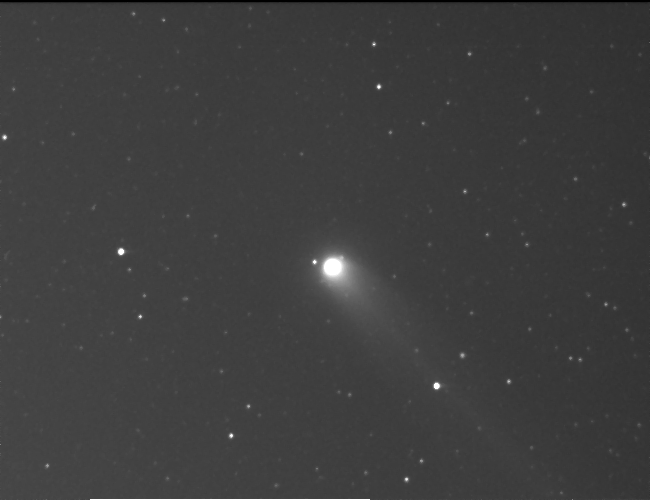
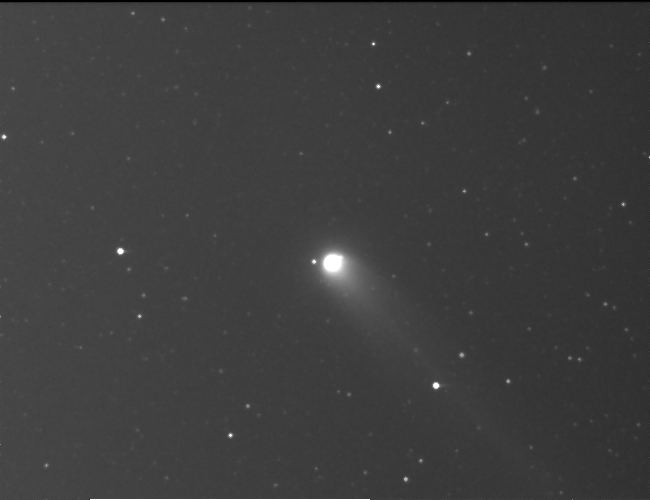
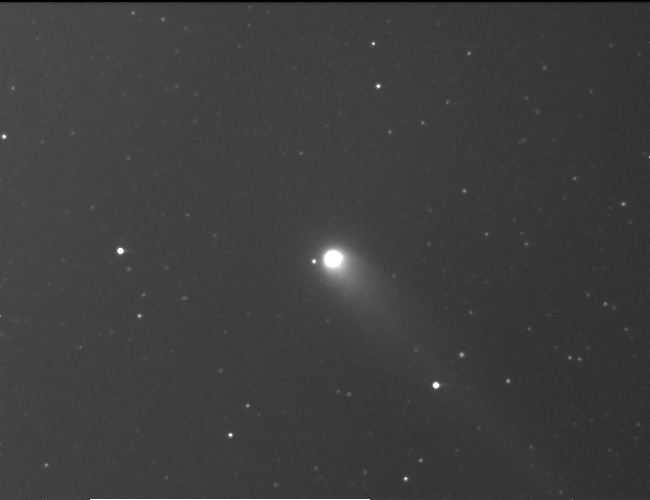

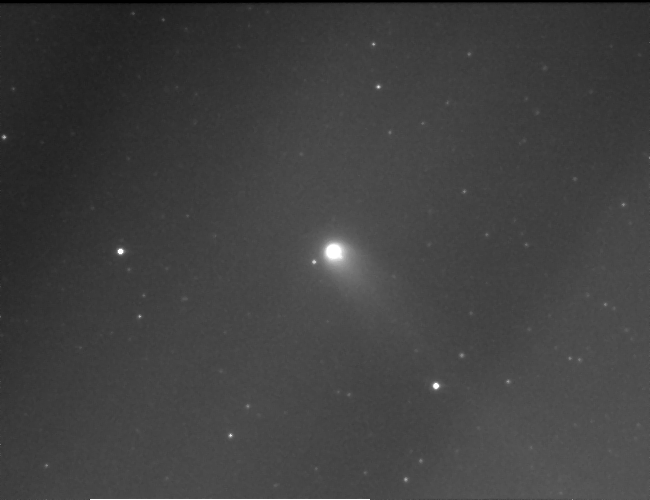
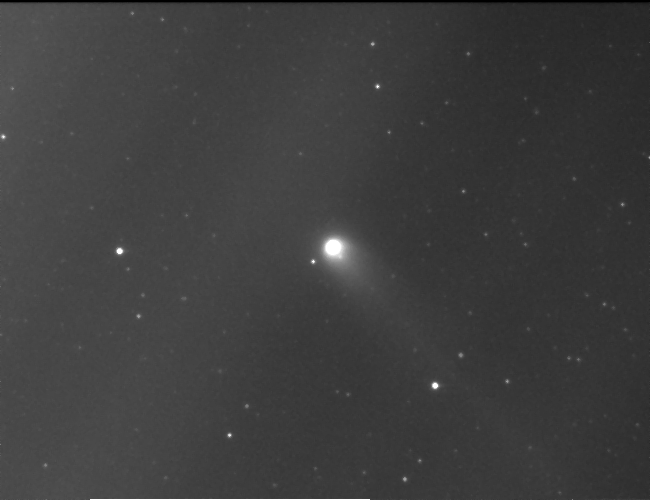
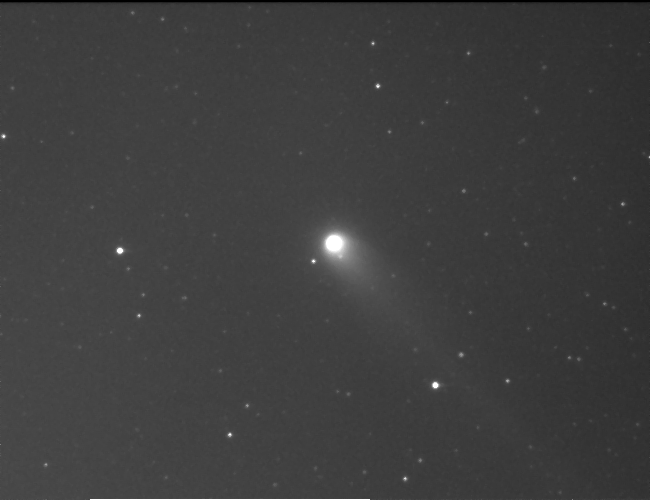
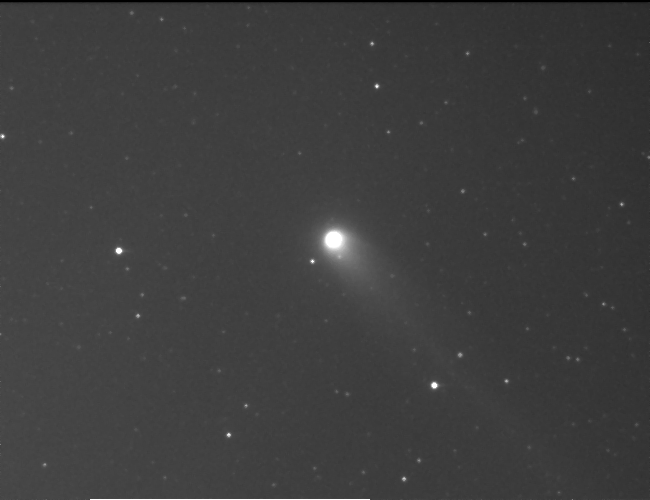 Activities Page
Activities Page
|
















 Activities Page
Activities Page